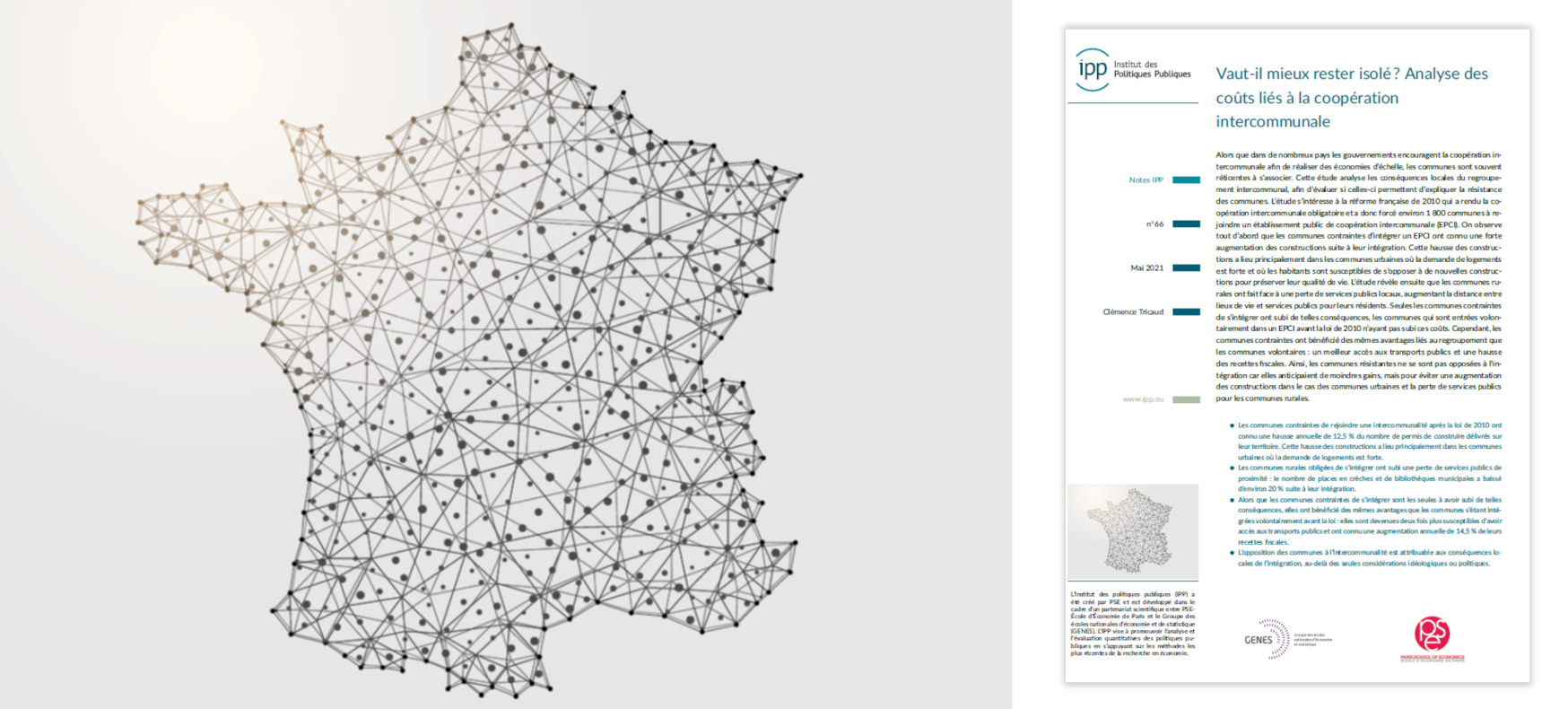
May 20, 2021 – The Institut des politiques publiques (PSE/GENES) publishes a new policy brief that analyses the local consequences of integration and assesses whether they help explain municipalities’ resistance.
Author: Clémence Tricaud
Contact: clemence.tricaud@anderson.ucla.edu
Summary: While central governments encourage intermunicipal cooperation to achieve economies of scale, municipalities are often reluctant to integrate. This policy brief analyses the local consequences of integration and assesses whether they help explain municipalities’ resistance. I focus on the 2010 reform in France that made intermunicipal cooperation mandatory, forcing around 1,800 municipalities to enter an intermunicipal community (IC). Results first show that municipalities forced to enter an IC experienced a large increase in construction following their integration. This impact is driven by urban municipalities where the demand for housing is high and where residents are likely to oppose new construction to preserve their quality of life. Second, the study finds that rural municipalities ended up with fewer local public services, increasing the distance to public services for their residents. Only municipalities forced to integrate faced such consequences of integration. In particular, I find no evidence that municipalities that had voluntarily joined a community before the 2010 law experienced the same adverse effects of integration. Yet, both types of municipality enjoyed similar benefits of integration, in terms of better access to public transport and higher fiscal revenues. These results suggest that resisting municipalities did not oppose integration due to lower benefits, but to avoid the costs associated with increased construction for urban municipalities and with the loss of public services for rural municipalities.
Download the IPP Policy Brief n°66 in pdf: Better Alone? Evidence on the Costs of Intermunicipal Cooperation
Key Points:
- Municipalities forced to join an intermunicipal community after the 2010 law faced an increase of 12.5 percent in the number of building permits delivered on their territory per year. This increase in construction is mainly driven by high-demand urban municipalities.
- Rural municipalities forced to integrate experienced a loss of public services: they ended up with about 20 percent fewer daycare spots and public libraries after integration.
- While only municipalities forced to integrate faced such consequences, they enjoyed similar benefits of integration as municipalities that voluntarily integrated before the law: they became twice as likely to have access to public transport and experienced an increase of 14.5 percent per year in fiscal revenues.
- Overall, this study provides new evidence that municipalities’ opposition to consolidation is driven by local consequences of integration, beyond ideological or political considerations.
Ce message est également disponible en :  French
French


